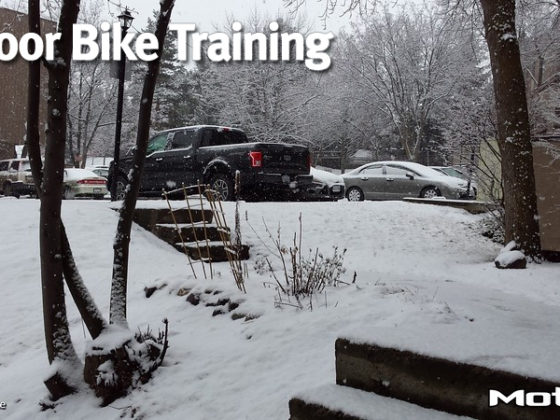,
 By the way, this is what the manifold looks like AFTER it’s been cleaned. On the left is what it looks like fresh out of the printer. Since you can’t print to air, the printer has to create a structural layer to print off of when a hollow section is created. Most 3D printers only print one material. Ours had a second material used for structural and base layer support. This material dissolves using a special solvent in a hot water bath making cleaning a hollow part like a manifold easy. Scraping and breaking out all of the support layer would have been a nightmare.
By the way, this is what the manifold looks like AFTER it’s been cleaned. On the left is what it looks like fresh out of the printer. Since you can’t print to air, the printer has to create a structural layer to print off of when a hollow section is created. Most 3D printers only print one material. Ours had a second material used for structural and base layer support. This material dissolves using a special solvent in a hot water bath making cleaning a hollow part like a manifold easy. Scraping and breaking out all of the support layer would have been a nightmare. Some college students spend their Spring Break on a beach getting hammered and nailed. Me? I spent my Spring Break getting tubed (and burnt). This is probably the worst exhaust you will ever see on MotoIQ, but it was also my first ever (it turns out it’s really freaking hard!) and it had to be done in 5 days. The weird shape is due to packaging. The gas tank sits just to the right of the header and the seat only a few inches above. Fitting everything without burning the driver or setting the fuel system ablaze was not easy. We also had to have the proper primary length to get good power. I’m proud to admit that the primaries are all within ½” of each other in length. While they should be perfectly equal, again, this was my first time doing this ever! I now have massive respect for the people who do this for a living. The unconventional pairing matches what Suzuki did from the factory.
Some college students spend their Spring Break on a beach getting hammered and nailed. Me? I spent my Spring Break getting tubed (and burnt). This is probably the worst exhaust you will ever see on MotoIQ, but it was also my first ever (it turns out it’s really freaking hard!) and it had to be done in 5 days. The weird shape is due to packaging. The gas tank sits just to the right of the header and the seat only a few inches above. Fitting everything without burning the driver or setting the fuel system ablaze was not easy. We also had to have the proper primary length to get good power. I’m proud to admit that the primaries are all within ½” of each other in length. While they should be perfectly equal, again, this was my first time doing this ever! I now have massive respect for the people who do this for a living. The unconventional pairing matches what Suzuki did from the factory. 
All of our exhaust tubing came from Columbia River Mandrel. The tubing is 304 stainless steel, starting at 1.5” for the primaries, 1.75” for the secondaries, and 2” to the muffler, which matches what Suzuki used from the factory. The original intent was to use slip joints at the secondaries and have them break right at the side of the chassis. This would allow us to easily split the exhaust so we could break open the chassis at its split point. In reality, I screwed up the alignment and they would not come apart once assembled. Fortunately, removing the exhaust still isn’t too difficult.
 The muffler is from FMF and is needed to pass the noise regulations SAE has. Since FMF mufflers can be easily repacked, this muffler is recycled from previous UD SAE cars (I think this one came from the 2012 car) and even had a bung for a wideband oxygen sensor already welded in. You may notice the throttle body right after the final collector. The original Suzuki exhaust has an active exhaust to help boost low end torque. Since it’s good for a pretty decent amount of low-end torque (10-15 lb-ft based on some of the dyno charts we saw), we decided to try it on our engine. This collector and throttle were cut off a Suzuki header. Actually, all of the collectors, as well as the mounting flanges, were all cut off a Suzuki header. Collectors are really damn expensive and we already had a Suzuki header lying around. It made welding a bitch, but it saved us a ton of money. As short as this exhaust was, it did still manage to pass the SAE noise test by two full decibels.
The muffler is from FMF and is needed to pass the noise regulations SAE has. Since FMF mufflers can be easily repacked, this muffler is recycled from previous UD SAE cars (I think this one came from the 2012 car) and even had a bung for a wideband oxygen sensor already welded in. You may notice the throttle body right after the final collector. The original Suzuki exhaust has an active exhaust to help boost low end torque. Since it’s good for a pretty decent amount of low-end torque (10-15 lb-ft based on some of the dyno charts we saw), we decided to try it on our engine. This collector and throttle were cut off a Suzuki header. Actually, all of the collectors, as well as the mounting flanges, were all cut off a Suzuki header. Collectors are really damn expensive and we already had a Suzuki header lying around. It made welding a bitch, but it saved us a ton of money. As short as this exhaust was, it did still manage to pass the SAE noise test by two full decibels. To prevent as much heat soak as possible, the header was wrapped in fiberglass wrap. We also covered the back of the seat in a layer of insulating tape, followed by a layer of gold Kapton tape. We did the same to the gas tank which sits right next to the header. Part of the wiring harness runs just above the header and it too got some wrap to prevent melting. You know, when you cover up those welds, the header actually looks pretty nice!
To prevent as much heat soak as possible, the header was wrapped in fiberglass wrap. We also covered the back of the seat in a layer of insulating tape, followed by a layer of gold Kapton tape. We did the same to the gas tank which sits right next to the header. Part of the wiring harness runs just above the header and it too got some wrap to prevent melting. You know, when you cover up those welds, the header actually looks pretty nice!


